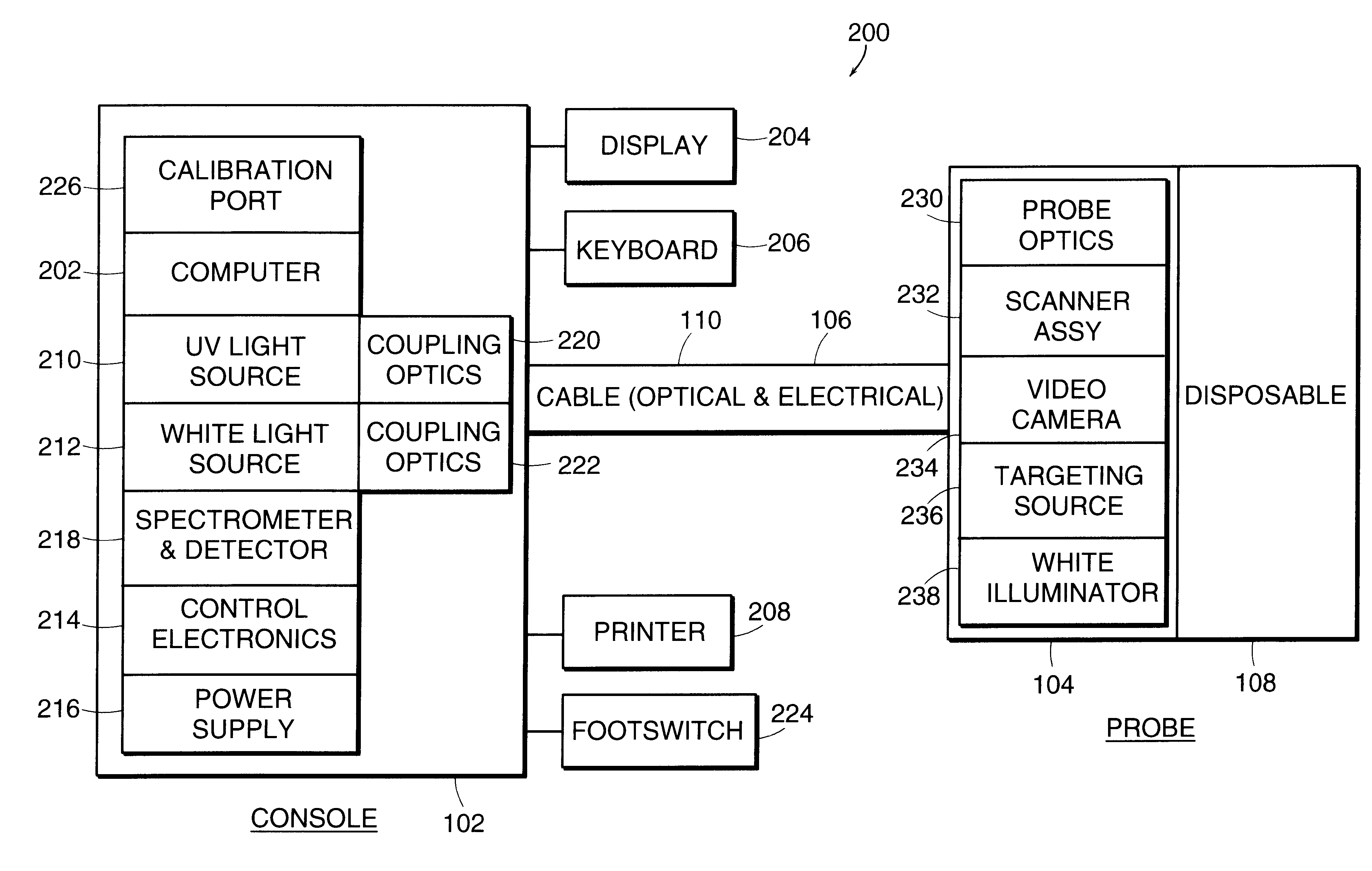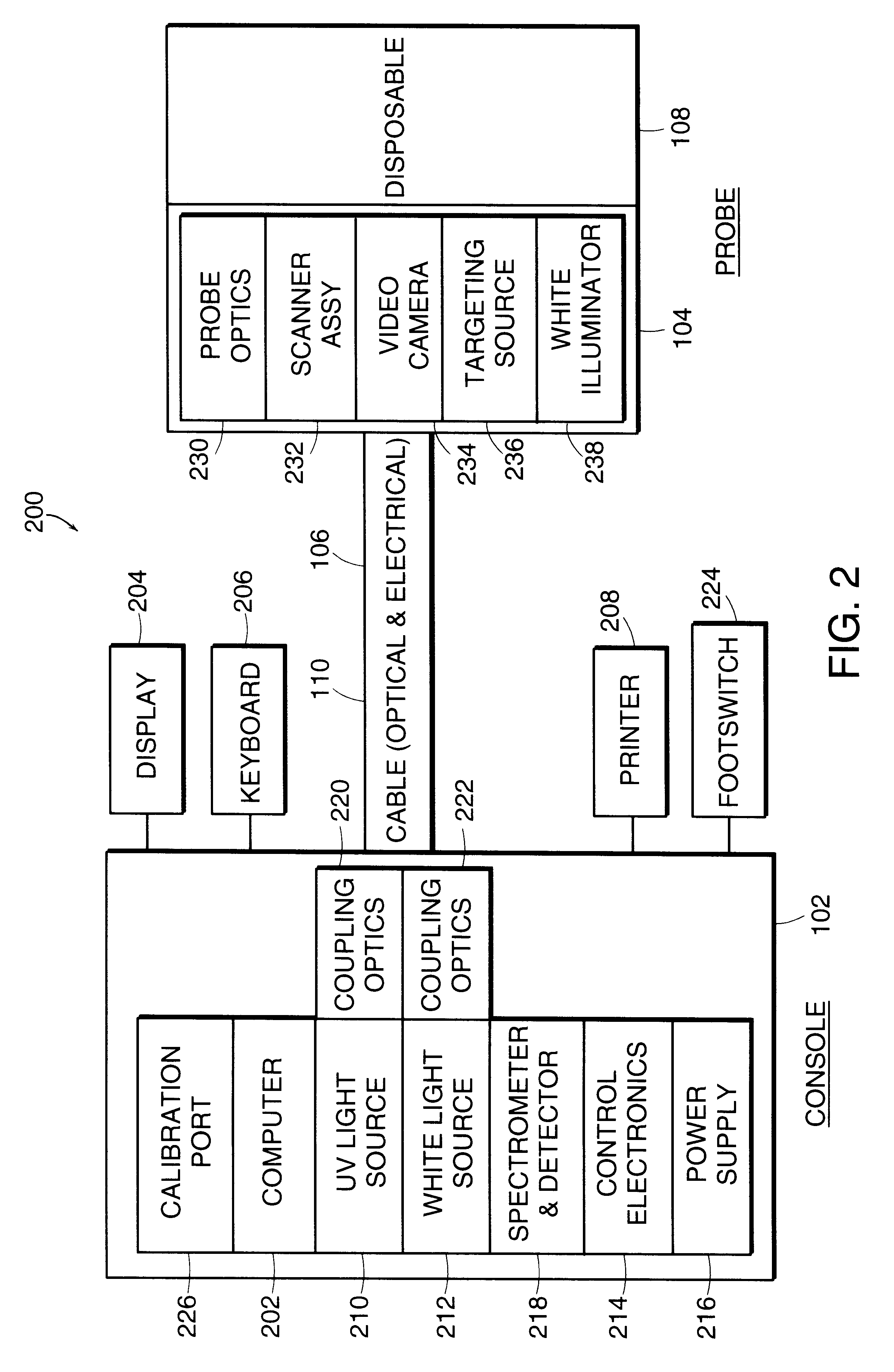Spectral data classification of samples
a spectral data and sample technology, applied in the direction of optical radiation measurement, fluorescence/phosphorescence, instruments, etc., can solve the problems of difficult comparison, inability to reach a definitive conclusion, and inability to assign a condition to the spectra of many samples without significant ambiguity
- Summary
- Abstract
- Description
- Claims
- Application Information
AI Technical Summary
Problems solved by technology
Method used
Image
Examples
Embodiment Construction
The invention will be described in terms of embodiments that relate to the use of optical spectra to discriminate between known conditions, particularly in the area of medical diagnostics, and especially as it relates to the analysis of spectra obtained from human cervical tissue in the detection of cervical cancer. However, the invention has applicability generally in the area of using optical spectra to distinguish between two or more conditions.
FIG. 1 depicts an exemplary spectroscopic system 100 employing a spectral data classification method according to an illustrative embodiment of the invention. The spectroscopic system comprises a console 102 connected to a probe 104 by a cable 106. The cable 106 carries electrical and optical signals between the console 102 and the probe 104. The probe 104 accommodates a disposable component 108 which used only once, and discarded after such use. The console 102 and the probe 104 are mechanically connected by cable 106. The console 102 con...
PUM
| Property | Measurement | Unit |
|---|---|---|
| length | aaaaa | aaaaa |
| wavelength | aaaaa | aaaaa |
| wavelengths | aaaaa | aaaaa |
Abstract
Description
Claims
Application Information
 Login to View More
Login to View More - R&D
- Intellectual Property
- Life Sciences
- Materials
- Tech Scout
- Unparalleled Data Quality
- Higher Quality Content
- 60% Fewer Hallucinations
Browse by: Latest US Patents, China's latest patents, Technical Efficacy Thesaurus, Application Domain, Technology Topic, Popular Technical Reports.
© 2025 PatSnap. All rights reserved.Legal|Privacy policy|Modern Slavery Act Transparency Statement|Sitemap|About US| Contact US: help@patsnap.com



